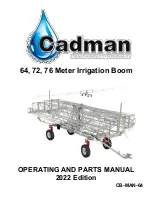
59
Subject to error and alteration
Access from your own applications
10. Access from your own applications
In addition to the numerous standardized access possibilities,
the Web-IO also offers the option of accessing from your own
application.
This can be done either using TCP/IP sockets from the common
high-level languages – but it is also possible to use common
Web techniques such as AJAX or PHO to communicate with the
Web-IO.
Access using TCP/IP sockets
The Web-IO offers three ways to access using TCP/IP sockets:
• Command strings
ASCII
• Binary structures
BINARY
•
HTTP requests
AJAX
Command strings ASCII
The input and counter can be read and the output set by
exchanging simple command strings.
Depending on the configuration the Web-IO operates in this
mode as a TCP server or UDP peer.
A list of the supported commands and additional details on access
via ASCII sockets can be found in the Web-IO programming manual.
(download at http:www.WuT.de). Follow the Manual link on the data
sheet page of your Web-IO.
TCP server
To access the Web-IO as a TCP server using ASCII sockets,
enable
TCP ASCII-Sockets
under
Communication paths >>
Socket-API
. Specify on which server port the Web-IO should
accept connections. The Web-IO can provide up to four TCP
connections on the specified port at the same time – any
additional connection attempt is rejected.














































